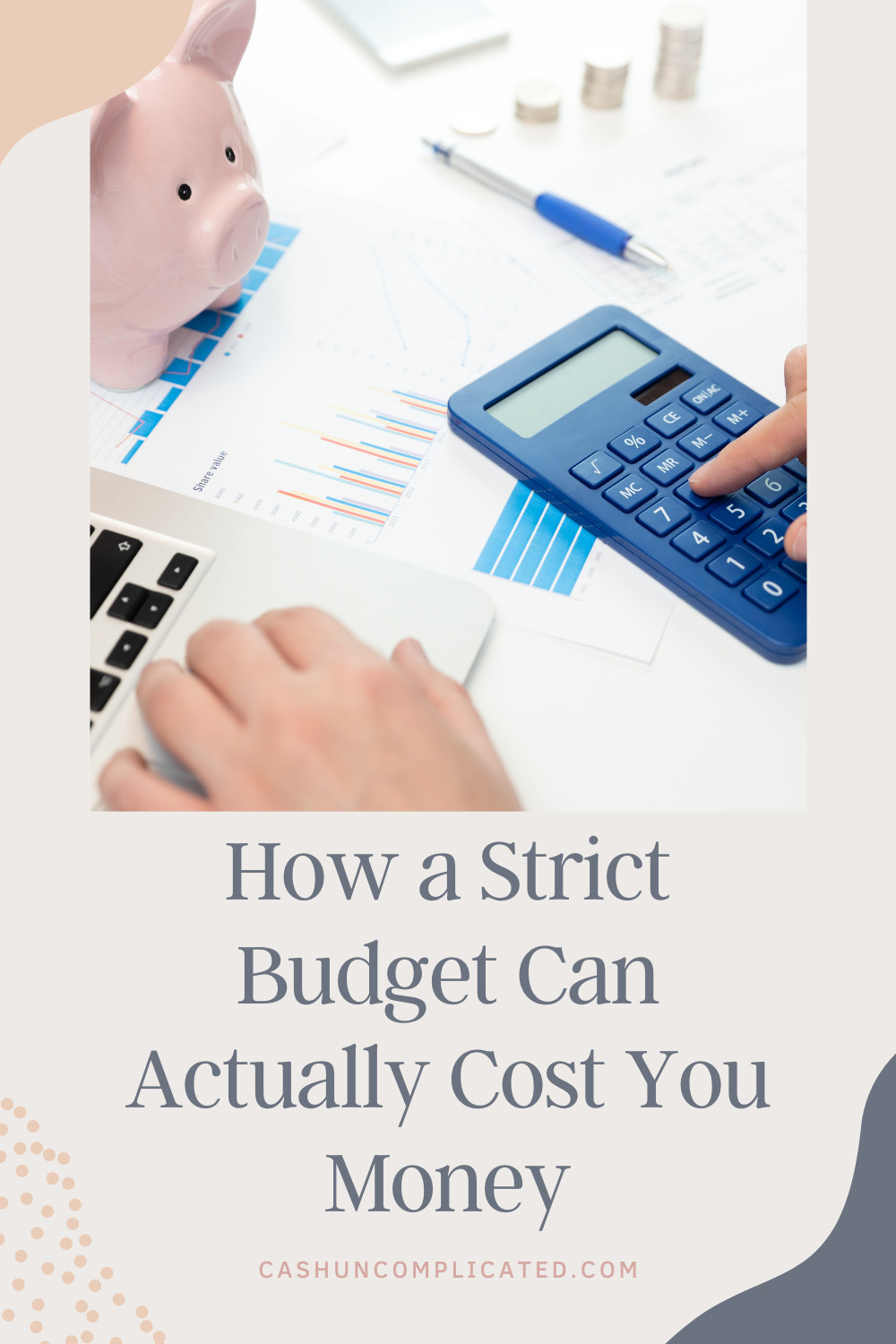There are different paths to retirement. Some ways might be faster or more optimal, but there isn’t a one-size-fits all. One way (or a combination) might work better for you while another method works better for someone else.
How Much Money Do I Need to Retire?
When looking at different paths to retirement, one of the most obvious and biggest considerations is how much money you need. You inherently can’t safely and comfortably retire if you don’t have enough money.
Most people solve for the monthly cashflow. The money can come from a variety, or combination, of sources. The key is to determine how much money you need every month, including enough for emergencies.
So if you currently live well off $6,000 per month from your job and want to continue with that amount, that’s how much you need per month to retire. It doesn’t matter if that $6,000 comes from real estate rent, dividends, a pension, or another source. It’s $6,000 and meets your needs at the time.
Keep in mind that if you are currently receiving health benefits from a W2 job, you’ll need to factor in that cost on top of your current costs.
Should I Hire a Financial Planner or DIY?
This is a personal question. It depends on your level of expertise and how confident you are in your plan. If you’re very confident, you might not need an advisor. Or you may be confident, but want a fee-only financial planner to double check some things and give a second opinion.
If you’re not confident at all and have no idea what you’re doing, it’s probably wise to hire someone or rapidly learn yourself. You know your level of knowledge and expertise, and that will drive the decision.
Retirement Versus Financial Freedom
Retirement is traditionally referred to as the time in your life when you stop working your primary job. For example, a firefighter who has worked in the department for 30 years is considered retired when she stops working as a firefighter.
Financial freedom is also referred to as financially free, financially independent, independently wealthy, etc. It just means you no longer have to work for money, even though you may choose to.
A person considered retired (no longer works or needs to work for money) has also obtained financial freedom. While someone who has obtained financial freedom, isn’t necessarily retired because they may choose to still work.
These are all loose terms and they are often used interchangeably. They are not “scientific” words and shouldn’t be treated as such.
Related:
- The Ultimate Financial Independence Checklist
- The Importance of Financial Freedom
- 11 Financial Independence Hacks to Start Today
Paths to Retirement
There are myriad paths to retirement. Some people choose to focus on just one way like building wealth through real estate. While others, such as myself, have chosen to focus on multiple ways.
The great thing is there are many different options and they can be mixed and matched to create the best scenario for you and your family. Before we get into the specific ways, here are a few examples using an individual who requires $5,000 per month to live comfortably:
- $5,000 in cash flow from rental properties
- $1,000 in Social Security, $1,500 from dividends, and $2,500 from a pension
- $5,000 from investment withdrawal
Number 1: Roth IRA and IRA
This is more of a traditional retirement strategy–open a Roth IRA or IRA. The appeal with the Roth IRA is that the gains are not taxed, leaving you with possibly hundreds of thousands of dollars in tax free earnings. While the IRA goes in without being taxed and comes out taxed.
Both have their unique advantages, you’ll need to decide what is right for your given situation, along with your CPA.
A word of caution for both the Roth IRA and IRA. They are not actual investments; they are just a holding. You still have to invest within them. This important point is made by Erika Kullberg in a short video she created.
Number 2: Real Estate
Unlike IRA’s, real estate is usually not thought of as a traditional investment. When I say real estate, I’m referring to rental properties, not your personal residence.
Real estate provides lots of different benefits like cashflow, appreciation, tax incentives, depreciation, etc. For more on the benefits of real estate investing, start with these books:
One of the cool things about real estate is that once you create enough monthly cashflow to cover all your expenses, you are financially free.
For example, someone with average monthly expenses of $5,500 who collects $6,000 in monthly cashflow is financially free. All the expenses are covered plus a little extra for good measure.
Note: Cashflow is not just total rent minus mortgage and property taxes. There’s a lot more that goes into it like capital expenditures, maintenance, vacancy, turnover costs, etc.
Number 3: Company Retirement Plans: 401(k), 403(b)
Back to more of the traditional retirement. Company retirement plans such as a 401(k), 403(b), etc. are commonly offered at work. Much like with a Roth IRA or IRA, investments have to be made within them.
There are major tax advantages these accounts offer versus brokerage accounts. Speak with your CPA or advisor for specific details and help with formulating the right plan for your situation.
Number 4: Social Security
Most people who work a traditional W2 job pay into Social Security. The idea is you work for X amount of years, contribute to Social Security with every paycheck and then get paid monthly when you decide to take your distributions.
The future of Social Security is always a hot topic as there are questions about the solvency of the program. Whether that means benefits reductions, or it stays the same–I don’t know, and don’t pretend to know.
All I know is that Social Security is currently an option for retirees, so it’s important to include in a post about retirement. The best thing to do is talk with your CPA and/or advisor and figure out how Social Security fits with your retirement planning strategy.
Number 5: Annuities
The general idea of annuities is you contribute a certain amount now in exchange for monthly payments when you reach a certain age. Usually the costs are upfront so they take away your investment capital in exchange for a future payout.
I’ve heard mixed things about annuities. If you’re interested in annuities as part of your retirement plan, the best first step would be to talk with your CPA and/or advisor. These posts also provide good information:
Number 6: Pensions
Pensions used to be one of the most common paths to retirement. Today, they are becoming increasingly rare. In fact, some of you may not have ever heard of a pension. Or maybe you heard one of your grandparents talk about them.
Some employers still offer pensions. If your employer does, you’ll likely learn about them from HR as you’re being hired. They are most common in government jobs like police, fire, and schools.
Basically, you as an employee contribute a certain percentage to your pension every month. Once you become vested, you’ll be eligible for a monthly payout at retirement age. There are usually percentages like two percent at 55 or two and a half percent at 62.
If you’re not sure if you have a pension or not, contact your HR or payroll department and they’ll give you more information.
Number 7: Brokerage Accounts
Last on the list of common paths to retirement is brokerage accounts. These are something you open up on your own and contribute as much as you’d like. It’s really important to talk with your CPA because these accounts aren’t likely to provide you with tax advantages likes some of the other ones mentioned in this post.
The nice thing is you can contribute as much as you’d like. Many people in the FIRE movement use these accounts as it allows them to “retire” once they reach financial independence. There is no waiting around until they reach a certain age.
Do I Have to Pick Just One Way?
This is the beauty of planning for retirement/financial independence. You don’t have to pick just one way! You can use one method, but most people choose a combination for maximization.
Your retirement planning can include something like real estate, a company sponsored plan, and social security–or any combination of the methods described above. Or maybe you’ll just pick two like a company sponsored plan and an annuity.
Conclusion
This post is meant to be introductory. My hope is that you’re able to familiarize yourself with different ways to plan for retirement/financial freedom (or maybe you know this stuff already).
Don’t let anyone tell you there is only one way. There are even several ways not included in this post such as infinite banking, HSA’s, etc. That’s why it’s important to talk with an expert like a CPA or fee-only financial advisor to optimize your plan and financial future.
What paths have you chosen to retirement and financial independence?












